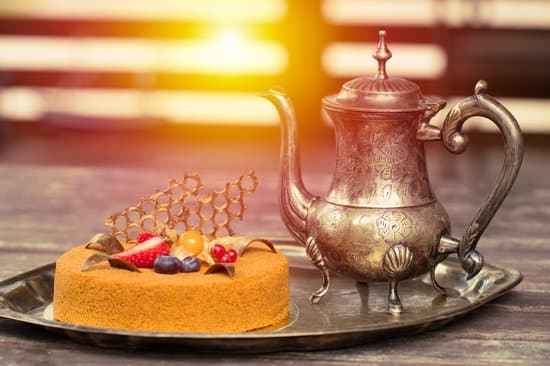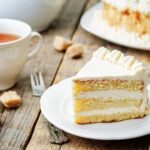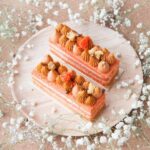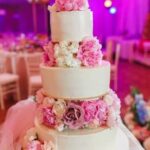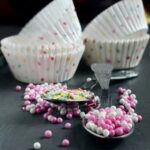When it comes to elevating a simple cake into a stunning masterpiece, the right icing recipe to decorate cake can make all the difference. Icing serves as not only a delicious finishing touch but also as a crucial element in enhancing the overall look and appeal of a dessert. Whether you’re looking to achieve a smooth, elegant finish or create intricate designs and textures, choosing the perfect icing is key.
A well-decorated cake can be the centerpiece of any celebration, from birthdays to weddings and everything in between. With various types of icing available, such as buttercream, royal icing, fondant, and ganache, each offering unique textures and flavors, there are endless possibilities for creating beautifully decorated cakes. The art of cake decorating often begins with selecting the right icing that suits both your taste preferences and design vision.
In order to successfully decorate cakes with icing, it’s essential to have the right tools and ingredients on hand. From piping bags and tips for precise designs to food coloring and flavor extracts for customization, having a well-equipped kitchen is crucial in achieving professional-looking results. Understanding the different types of icing recipes available and honing your skills in applying them will allow you to unleash your creativity and turn any plain cake into a work of art.
Types of Icing
Icing is a crucial element when it comes to decorating cakes, as it not only adds flavor but also plays a significant role in the overall appearance of the dessert. There are several types of icing that can be used to decorate cakes, each with its own unique characteristics and applications. Understanding the differences between these icing varieties can help you choose the best one for your cake decorating needs.
Types of Icing
- Buttercream: Buttercream is a creamy and versatile icing that is perfect for creating smooth finishes and intricate designs on cakes. It is made with butter, powdered sugar, and flavorings, making it rich and decadent.
- Royal Icing: Royal icing is a hard-drying icing made from powdered sugar and egg whites or meringue powder. It dries to a smooth, firm finish, making it ideal for intricate piping work and detailing on cakes.
- Fondant: Fondant is a pliable icing that can be rolled out like dough and draped over cakes for a smooth finish. It provides a clean canvas for decorating with additional fondant accents or intricate designs.
- Ganache: Ganache is a luxurious combination of chocolate and cream that creates a rich, glossy finish on cakes. It can be used as an icing or filling, offering both flavor and elegance to cake decorations.
Each type of icing has its own unique properties that cater to different cake decorating styles and preferences. Experimenting with these various icings can help you discover which one works best for your specific design needs. Whether you prefer the creamy sweetness of buttercream or the elegant firmness of royal icing, mastering the art of using different icings can take your cake decorating skills to the next level.
Essential Tools and Ingredients for Icing
Piping Bags and Tips
When it comes to decorating cakes with icing, piping bags and tips are essential tools for achieving different designs and textures. Piping bags come in various sizes and materials, such as disposable plastic or reusable cloth, allowing decorators to choose what works best for their needs.
Meanwhile, piping tips also come in a variety of shapes and sizes, from round tips for writing to star tips for creating rosettes and shells. Having a set of piping bags and tips on hand can elevate the aesthetics of any cake decoration.
Food Coloring and Flavor Extracts
To add visual appeal and flavor to icing, food coloring and flavor extracts play a crucial role in cake decorating. Food coloring allows decorators to create vibrant hues or pastel shades to match any theme or occasion.
Additionally, flavor extracts such as vanilla, almond, or citrus can enhance the taste of the icing while complementing the overall flavor profile of the cake. By experimenting with different combinations of food coloring and flavor extracts, decorators can personalize their creations and delight taste buds simultaneously.
Additional Ingredients
In addition to piping bags, tips, food coloring, and flavor extracts, there are other essential ingredients that go into making icing for decorating cakes. Common ingredients include butter or shortening as a base for buttercream icing, powdered sugar for sweetness and texture, and milk or heavy cream for consistency adjustment.
Depending on the type of icing being made, additional ingredients like egg whites for royal icing or chocolate for ganache may be necessary. Understanding how each ingredient contributes to the overall outcome of the icing recipe is key to successful cake decorating endeavors.
Step-by-Step Guide to Making Buttercream Icing
Buttercream icing is a classic and versatile option for decorating cakes. It’s creamy, smooth, and can easily be flavored and colored to suit any occasion. Whether you’re a beginner or a seasoned baker, mastering the art of buttercream icing is essential for creating beautifully decorated cakes. In this section, we will provide you with a step-by-step guide on how to make perfect buttercream icing every time.
Ingredients
To make buttercream icing, you will need unsalted butter, confectioners’ sugar (powdered sugar), vanilla extract, and heavy cream or milk. The ratio of butter to sugar is typically 1:2 – for every cup of butter, use two cups of powdered sugar. You can adjust the amount of sugar to achieve your desired sweetness level.
Measurements
Start by creaming the room temperature butter until it is smooth and fluffy. Gradually add in the powdered sugar, mixing until well combined. Add in vanilla extract for flavor and a splash of heavy cream or milk to achieve the desired consistency – thicker for piping decorations or thinner for spreading on cakes.
Mixing Process
Using an electric mixer with a paddle attachment makes the process of making buttercream icing much easier. Start at low speed to prevent the powdered sugar from flying everywhere, then gradually increase the speed as the ingredients come together. Scrape down the sides of the bowl as needed to ensure everything is evenly mixed. Once your buttercream icing is smooth and fluffy, it’s ready to use for decorating your cake.
Mastering the art of making buttercream icing will open up endless possibilities for decorating cakes. Experiment with different flavors and colors, practice piping techniques, and have fun creating beautiful designs on your cakes. With this basic recipe in hand, you’ll be well on your way to becoming a cake decorating pro using this key component – buttercream icing.
Creative Ways to Decorate Cakes With Icing
Icing plays a crucial role in the overall presentation of a cake, turning a simple dessert into a work of art. Creative cake decorators have an array of techniques at their disposal to make cakes visually appealing and unique. Piping techniques are one of the most popular methods to decorate cakes with icing.
By using different piping tips, decorators can create intricate designs, flowers, borders, and even personalized messages on cakes. Beginners can start with basic piping skills like making rosettes or shell borders before moving on to more complex designs.
In addition to piping techniques, playing with textures can add depth and visual interest to a cake’s decoration. Using tools like textured rolling pins or stencils can create patterns on the icing that mimic different materials such as lace or even wood grain. Adding edible glitter or shimmer dust can also enhance the overall look of the cake by providing a touch of sparkle and elegance.
Another creative way to decorate cakes with icing is by incorporating fondant accents. Fondant is versatile and pliable, allowing decorators to create intricate shapes, figures, and edible decorations that can elevate the design of a cake.
From delicate flowers to playful figurines, fondant accents provide endless possibilities for customizing cakes for various occasions like birthdays, weddings, or holidays. Mixing different techniques like piping details with fondant embellishments can result in stunning and eye-catching cake designs that will impress any guest at a celebration.
Troubleshooting Common Icing Issues
Icing is an essential element when it comes to decorating cakes, as it not only adds flavor but also serves as a canvas for creativity. The perfect icing recipe can make a cake stand out and leave a lasting impression on guests at any special occasion. However, even the most experienced bakers can encounter common icing issues like cracking, air bubbles, and consistency problems while decorating a cake.
To troubleshoot cracking in your icing, start by ensuring that your cake layers are completely cooled before applying the icing. Cracking can often occur when there is a drastic temperature difference between the cake and the icing. Additionally, overmixing your icing can also cause it to become stiff and prone to cracking. To prevent this issue, mix your icing just until all the ingredients are incorporated.
Air bubbles are another common problem when decorating cakes with icing. To avoid this issue, try gently tapping the filled piping bag on a flat surface to release any trapped air before piping. You can also opt for using a coupler attachment with your piping tips to reduce the risk of air bubbles forming in the icing as you decorate.
Consistency problems with your icing can arise from using incorrect measurements or varying room temperatures. If your icing is too runny, add more powdered sugar gradually until you reach the desired consistency. On the other hand, if your icing is too thick, incorporate small amounts of milk or water until it reaches a spreadable texture. By paying attention to these details and making adjustments as needed, you can overcome common icing issues and achieve beautifully decorated cakes every time.
Expert Tips for Perfectly Decorating Cakes
Achieving a perfectly decorated cake can seem like a daunting task, but with the right techniques and tips, you can create stunning masterpieces that will wow your friends and family. One key aspect of decorating cakes is achieving smooth finishes on your icing.
To achieve this, make sure to crumb coat your cake first by applying a thin layer of icing to seal in any crumbs. Once the crumb coat has set, apply a thicker layer of icing and use a bench scraper or spatula to smooth it out evenly.
When it comes to intricate designs, practice and patience are key. Use different piping tips to create various shapes and textures on your cake, from simple swirls to intricate patterns. Experiment with different techniques such as piping flowers, writing messages, or creating lace-like designs. Practice on parchment paper before moving on to your actual cake to perfect your skills.
For clean lines in your cake decoration, precision is crucial. Invest in high-quality piping bags and tips to ensure accurate placement of icing on your cake. Use food coloring sparingly and mix it well to avoid streaks or uneven colors. When creating borders or edges, take your time and work slowly to maintain clean lines. Remember that practice makes perfect, so don’t be discouraged if your first attempts are not flawless.
Overall, decorating cakes with icing allows for endless creativity and personalization. Whether you’re making a birthday cake or a wedding cake, the right techniques and tips can help you achieve professional-looking results. With practice and attention to detail, you can become an expert at decorating cakes that will impress everyone who sees them.
Icing Recipe Variations
When it comes to decorating cakes with icing, there are numerous variations that cater to different dietary needs and flavor preferences. For those following a vegan lifestyle, there are several options available to create delicious and dairy-free icings. A popular choice is to use plant-based milk such as almond or coconut milk instead of dairy milk in the traditional icing recipe.
Additionally, vegetable shortening can be used as a substitute for butter in buttercream icing recipes. To sweeten the icing, maple syrup or agave nectar can replace traditional powdered sugar.
For individuals looking for low-sugar alternatives in their icing recipe, there are creative ways to reduce the overall sugar content without sacrificing flavor. One approach is to use natural sweeteners like stevia or erythritol in place of regular sugar. These alternatives can help cut down on calories while still providing sweetness to the icing. Another option is to incorporate mashed fruits like bananas or applesauce into the icing mixture, adding natural sweetness and moisture without relying solely on sugar.
To add a unique twist to your cake decorations, experimenting with different flavor combinations in your icing recipe can elevate the overall appeal of your baked creations. Consider infusing your icing with extracts like lavender, citrus zest, or coffee for a burst of unexpected flavors.
Mixing in spices such as cinnamon, cardamom, or nutmeg can also add depth and warmth to your icing. By exploring various flavor profiles and being adventurous with ingredient pairings, you can truly make your cakes stand out with delicious and innovative icings.
| Variation | Description |
|---|---|
| Vegan Options | Plant-based milk and vegetable shortening can replace dairy products; maple syrup or agave nectar as sweeteners |
| Low-Sugar Alternatives | Stevia, erythritol, or mashed fruits like bananas for natural sweetness; reduce sugar content without compromising taste |
| Unique Flavor Combinations | Experiment with extracts like lavender or citrus zest; include spices such as cinnamon or cardamom for unexpected flavors |
Conclusion
In conclusion, mastering the art of icing is undeniably crucial for creating visually stunning and delicious cakes for special occasions. Whether it’s a birthday celebration, wedding reception, or any other event worth commemorating, a beautifully decorated cake can elevate the festivities to another level. The plethora of icing options, such as buttercream, royal icing, fondant, and ganache, allows for endless creativity and customization to suit any taste or theme.
With the right tools and ingredients at hand, such as piping bags, tips, food coloring, and flavor extracts, anyone can transform a simple cake into a work of art. From intricate designs to smooth finishes and clean lines, decorating cakes with icing offers endless possibilities for creative expression. And let’s not forget the satisfaction that comes from seeing the joy on someone’s face when they see a beautifully decorated cake made with love and care.
So next time you have a special event coming up or simply want to indulge your creative side in the kitchen, don’t hesitate to try out different icing recipes and techniques to elevate your cake decorating skills. Whether you opt for classic buttercream or experiment with unique flavor combinations and vegan alternatives, remember that the final touch of icing is what truly brings a cake to life. Happy decorating.
Frequently Asked Questions
What Kind of Icing Do You Use to Decorate a Cake?
When it comes to decorating a cake, the most common type of icing used is buttercream. Buttercream icing is versatile, easy to work with, and can be made in various colors and flavors. It provides a smooth finish and can hold intricate designs well.
What Is the Best Icing to Practice Cake Decorating?
The best icing for practicing cake decorating would be royal icing. Royal icing is made from confectioners’ sugar and egg whites, resulting in a smooth, hard finish once dried. It is perfect for piping intricate designs, creating flowers, and other decorative elements on cakes.
What Is the Difference Between Frosting and Icing?
Frosting and icing are often used interchangeably, but they do have slight differences. Frosting is typically thick, creamy, and soft in texture, making it perfect for spreading on cakes or cupcakes smoothly. On the other hand, icing tends to be thinner and more glaze-like in consistency, ideal for drizzling over pastries or cookies for a shiny finish.

Welcome to our cake decorating blog! My name is Destiny Flores, and I am the proud owner of a cake decorating business named Cake Karma. Our mission is to provide delicious, beautiful cakes for all occasions. We specialize in creating custom cakes that are tailored specifically to each customer’s individual needs and tastes.

